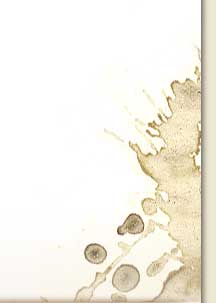
WE CAN REJOICE THIS FALL in a remarkable double exhibition at the Metropolitan Museum of Art. It’s been mounted jointly with the Musée D’Orsay in Paris, where it showed through Spring and early Summer before coming to New York.
It brings together the work of two direct Parisian contemporaries, Édouard Manet and Edgar Degas, who were friends, rivals, and occasionally rather bitter foes, though perhaps mercifully not permanently so. Degas created portraits of Manet frequently (a sketched example, above left) although the favor was not returned. For my home-made diptych combining the two artists I have had to resort to a Degas self-portrait in oils.
It’s hard to avoid the impression that Manet was the crustier of the two. Manet took exception to a family portrait Degas made of him sitting (or lounging?) with his wife as she played the piano. He so disliked Degas’ rendering of Madame Manet’s features that he sliced off the entire musical section of the canvas, along with a sizable portion of his wife (below right). Degas was greatly offended at the work’s mutilation. Suzanne Manet’s reaction has gone unrecorded.

The two men had much in common. Similar backgrounds for a start, both coming from prosperous bourgeois families and both starting out in the same professional direction, aimed at becoming lawyers, before they both turned to drawing and painting. Although Manet was the only one to have a brief try at becoming a naval officer, they both displayed great fondness for the sea, exulting in some strongly-visualized seascapes, while neither of them produced much in the way of landscapes.
They had overlapping networks of friends and connections in mid- to late-19th century France – and they repeatedly turned to similar subjects and subject-areas throughout their painting careers. For a while early on, Degas tried history-painting (such as medieval war scenes) but both ended up strongly committed to the capturing of contemporary and largely urban French life – often of the louche kind.
 Not least in this category was Manet’s breakout work, Lunch on the Grass of 1863 (left), submitted to the Paris Salon and not accepted, but then defiantly exhibited among the ‘rejects’ of the Salon de Refusés.
Not least in this category was Manet’s breakout work, Lunch on the Grass of 1863 (left), submitted to the Paris Salon and not accepted, but then defiantly exhibited among the ‘rejects’ of the Salon de Refusés.
Le Déjeuner’s combination of fully dressed men with nude and partly-naked women created the kind of notoriety for which the French phrase succés de scandale seems to have been tailor-made. For many, an even bigger scandal erupted with his frank 1865 portrayal of two demi-monde characters, the prostitute Olympia with her Black (and unnamed) assistant.

The transatlantic curators have paid, from their 2023 standpoint, considerable attention to the political climate in which the artists operated. Both were radicals of a kind – though Degas came to be way more revolutionary on canvas than in his (largely conservative) personal politics.
 On his mother’s side Degas had many American relations, including a mixed-race, Creole line. The family’s main business was in Louisiana’s cotton trade. Not long after the US Civil War ended he visited a New Orleans cotton exchange and captured some indulgent-looking elements of it (right). His American paintings were largely oblivious toward Black people.
On his mother’s side Degas had many American relations, including a mixed-race, Creole line. The family’s main business was in Louisiana’s cotton trade. Not long after the US Civil War ended he visited a New Orleans cotton exchange and captured some indulgent-looking elements of it (right). His American paintings were largely oblivious toward Black people.
Manet, quite differently, expressed an explicit and well-documented stance against slavery. And during the war he made a painting, voicing considerable satisfaction with it, that depicted a naval engagement in which the Confederate side was soundly beaten. (The Battle of the Kearsarge and the Alabama, 1864; not reproduced here, but hung prominently in the show.)
When it comes to creative style there are of course distinct contrasts to be seen. I’m grateful to my dear companion for pointing out, while we progressed through the Met’s well designed gallery plan, how Manet frequently builds a painting out of stark and separate blocks, often deep, flat black or plain white, sometimes both. Degas for his part will soften his edges — and his chosen scene or portrait will instantly come into our view as a subtly interconnected totality, containing a tumultuous variety of loosely braided colors.
Not for nothing, we can say, was Degas a prime mover among the self-styled ‘Impressionists’ who revolutionized the art world with their Premiere Exposition of 1874. Interestingly, he never cared for the Impressionist label. And as a body his fellow exhibitionists cloaked themselves as an ‘Anonymous Society of Artists, Painters, Sculptors, Engravers etc’ on the cover of their show’s catalogue.
The Manet-Degas show is co-curated by Stephan Wolohojian and Ashley Dunn of the Met, in collaboration with Laurence des Cars, Isolde Pludermacher and Stéphane Guégan in Paris.
The exhibition opens to the public this Sunday, September 24th and it will remain up until January 7th next year.
